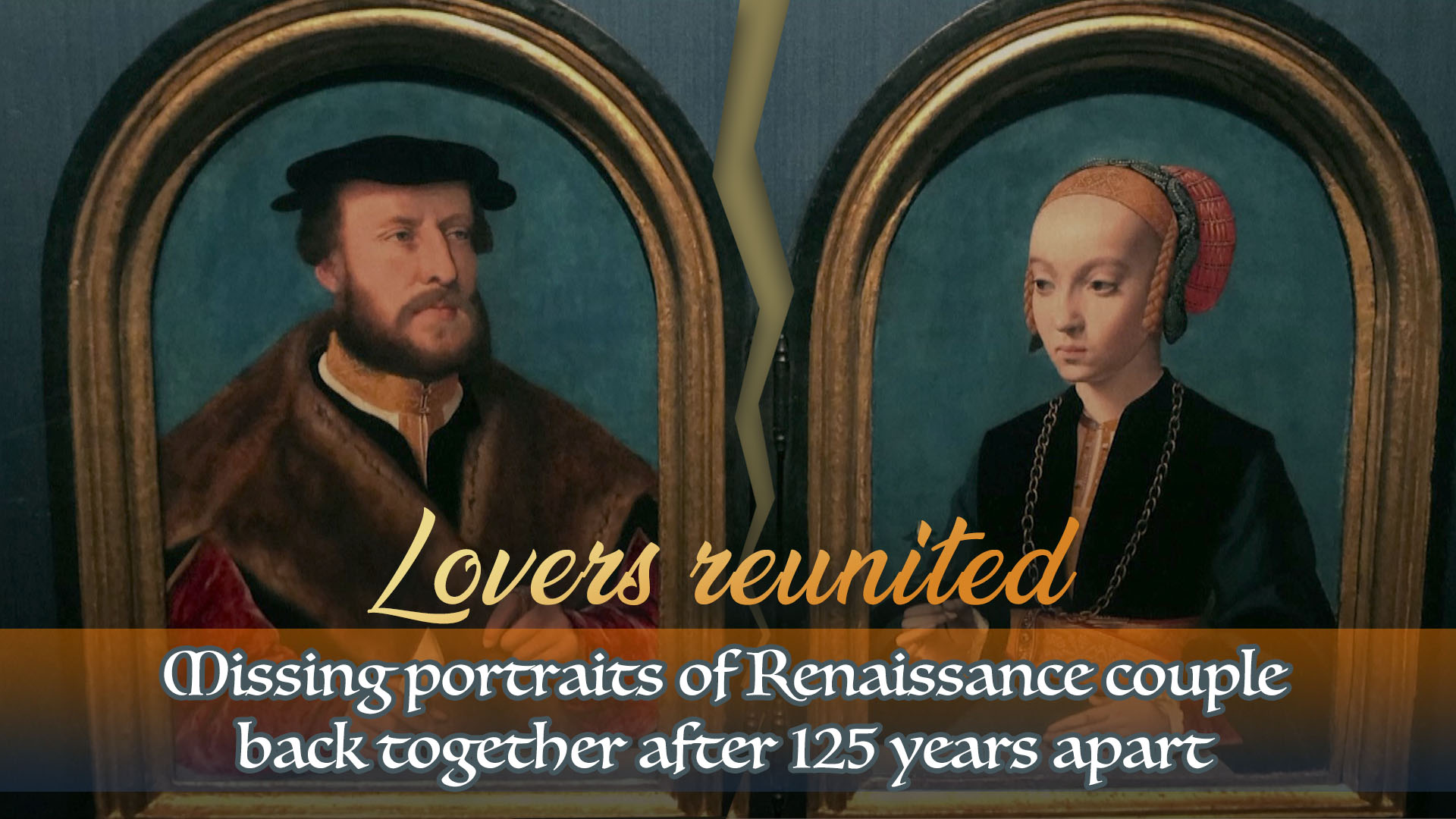02:17

A 125-year-old art mystery has been solved.
Separated portraits of a 16th-century high-society couple were reunited at the Mauritshuis museum in The Hague last month. Curator and art historian Ariane van Suchtelen spent two decades searching the length and breadth of Europe for clues that help her bring the portraits of the husband and wife together.
The Mauritshuis has hosted the portrait of a Renaissance lady since 1951, on long-term loan from Amsterdam's Rijksmuseum. Curators knew that it was part of a diptych, an artwork made of two panels, often of married or engaged couples, meant to be viewed together.
"You can tell if you look at the painting that she belongs with another portrait. She is turned to the left and she's offering a flower – a bittersweet – to somebody," Van Suchtelen, said. But to whom was she handing it?
The first clue emerged in 2004 when Van Suchtelen discovered a catalog of a London auction dating back to 1896 in the archives of the Netherlands Institute for Art History.
She got her hands on sale records of a diptych, but it was mislabeled as belonging to a Dutch painter. She also found sketches of the family's coat of arms and a black and white photograph of the man – it was enough to kickstart her investigation.
"It was auctioned in London in 1896 with a pendant portrait of a man, but at that time, they were ascribed to a different artist. And the two people, a man and a woman, were anonymous," she said.
She followed up and found that the coat of arms belonged to Jakob Omphalius, a scion of high-society in 16th-century Cologne.
The mystery was partly resolved. Jakob Omphalius was the man in the missing part of the portrait. The lady, Elisabeth Bellinghausen was his fiancée, later wife.
The couple's portrait was painted by Bartholomaus Bruyn the Elder (1493-1555) before their marriage in 1539.
"Bartholomaus Bruyn became hugely popular. And all of the rich people of Cologne had their portraits painted by him. But he painted very few sorts of independent portraits. Usually, [they] were couples, a man and a woman, either at the time they were married or sometimes also when still engaged to be married," said Van Suchtelen.
The remaining enigma was the location of the portrait of Omphalius.
Van Suchtelen discovered that it was purchased by an art collector in London.The woman's portrait by another in Paris.
The missing male portrait continued to be a mystery until May last year when a small auction house in Paris sold a "portrait of an unknown man" to a gallery in Switzerland. The painting was spotted by a German curator who tipped off the Rijksmuseum.
Van Suchtelen knew that the lonely lady's suitor had been found. The Mauritshuis acted fast and acquired the painting and confirmed that it was the missing artwork.
After the painting of Jakob was first on display at the art fair TEFAF in Maastricht, he was finally reunited with Elisabeth following their 125-year separation in the Mauritshuis this summer.
"It's wonderful to have the two here together, it's wonderful to have that story, and it's also wonderful to be able to reunite a work of art because that's what it is as well," said the curator.
The two-part portrait is now part of the Dutch national art collection and can be seen as part of the Mauritshuis's permanent collection.